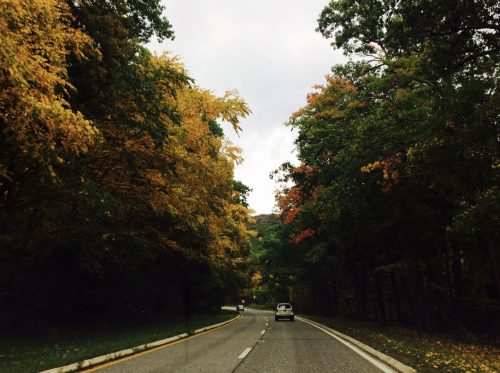Thursday Oct 15, 2020 NYC
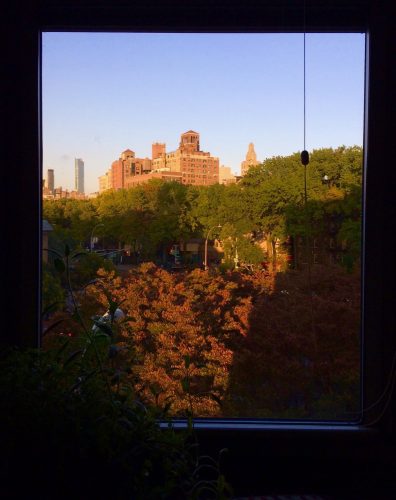
Experience: Seeing the Beautiful World of Yoga at the Cave
As we mentioned in the last blog post, we would like to introduce here the writing that Mr. Shimamoto contributed for Paramahamsa Vol. 139 (the bi-monthly member’s magazine of Mahayogi Mission Japan) about his experience of discovering what Yoga is and who Shri Mahayogi might be, having been bestowed with the opportunity to be physically close with Shri Mahayogi for 10 days in the winter of 2019-2020 when Shri Mahayogi spent 3 months in New York.
Mr. Shimamoto is a biologist and researcher in the field of IPC stem cells. After hearing about Shri Mahayogi, he met him for the first time at a Satsangha in Kyoto in July 2019, and then embarked on practicing asana and meditation.
Seekers are drawn to Shri Mahayogi from all walks of life and with various backgrounds and interests, as this month’s Pranavadipa Vol. 71 represents on a microscale in one of the featured Satsangha, which contains a question Mr. Shimamoto asked to Shri Mahayogi at that time, as well as Shri Mahayogi’s response. That was his second time meeting Shri Mahayogi, and it was just a few months after when he made the trip to New York.
Because of Mr. Shimamoto’s scientific background, in this article we are introducing here, we are able to catch a glimpse of the meeting of “science” and “Yoga,” two things that may at times seem at odds based on modern perceptions. And in addition to that, we have the opportunity to see how Mr. Shimamoto’s perception of Yoga changes during his stay at the Cave and how he begins to work within himself, challenging his own mind, its assumptions and beliefs, with the teaching of Yoga.
*
 Seeing the Beautiful World of Yoga at the Cave
Seeing the Beautiful World of Yoga at the Cave
Ren Shimamoto
Kyoto, Japan – May 2020
I stayed at the Cave in New York for ten days, from February 7th to 17th of 2020, to learn and practice Yoga under the supervision of Shri Mahayogi and Anandamali-san. Actually, I first met Shri Mahayogi at Satsangha in Kyoto, held in July of the previous year. Because I had met him only a few times since then, moreover, I had just started practicing Yoga when I heard the advice for staying at the Cave during Shri Mahayogi’s visit from Yogadanda-san, I wondered whether I should wait to take this opportunity until I had undergone more practice. But, after I encountered Yoga, my heart was already strongly drawn to it at once, and I had a keen desire to concentrate on learning and practicing Yoga directly under Shri Mahayogi; so I decided to ask him anyway. Thankfully, he accepted my wish and I had a wonderful experience, far beyond what can be described.
A Vast World of Yoga Expanding Outward
During my stay in New York, I participated in a public Satsangha, the Yoga Sadhana Program with Shri Mahayogi (asana and meditation class directly taught by Shri Mahayogi), and regular asana classes. At the Cave, I prepared food for Shri Mahayogi daily with Anandamali-san, from the shopping to the cooking. And at other times, while staying at the Cave, I received much guidance from Shri Mahayogi in one-on-one conversation. Until then, I did not know much about Yoga, so I asked much more than a hundred beginner questions like: “What does Yoga mean?” “Why does Shri Mahayogi always wear orange clothes?” and “What does Shri Mahayogi do?” Shri Mahayogi answered all my questions politely until I understood them. His kindness moved me so deeply. His thorough guidance resolved my unsolved questions that had been stuck in me, connected the parts that were not connected, and I was able to grasp the whole picture of the teaching of Yoga. I realized that I only knew a tiny part of Yoga: health, beauty, and relaxation. I was amazed, because it felt to me as if I entered a clothing store and was then surprised to see a vast world of Yoga expanding out as I stepped into the back.
One of the reasons that I started practicing Yoga was because of the difficulty I faced in my job, which I have devoted my life to, and I wanted to resolve this anguish caused by it. That agony was alleviated within a short time through the asana and meditation I learned from Mahayogi Mission, and I was very surprised to experience this therapeutic effect. Yet, this is only a small part of the aspects of Yoga I realized later on. The teaching of Yoga explains the mechanism of how self-awareness (ego), the root that generates distress in our life, arises. It felt to me as if I had opened the casing of a computer, which is me myself, and saw the contents. The teaching of Yoga explains that ego is simply a phenomenon, and there is no substance, that there is a true Self witnessing the ego, and that the true Self is everlasting—it will not disappear if our body dies. That means that I have identified myself as being Ren Shimamoto, a Japanese person, a biological researcher, a soccer player, and as being tan—but actually, I am mistaken. It was beyond surprising and honestly scared me a bit. I only understood that in my head, and had not completely digested it yet, but still, I thought that it must be true because Shri Mahayogi says that it is so.
I was also very impressed by the teaching of Yoga that men are born inheriting karma from their previous lives. Shri Mahayogi even told me that children are born by choosing the parents that will fulfill their karma. I was struggling with parenting sometimes, a father and son relationship. When my children weren’t behaving as I asked, I would get angry or disappointed, which is suffering. But, the teaching made me realize that I did not respect their karma, and instead, I was trying to fulfill my own karma by manipulating them. Realizing that there must be a reason for them to have come to me, and they are living fighting with their own karma—I shifted the way I was, and now I am focusing on supporting them.
What was shocking to me was that Shri Mahayogi said that the universe is repeatedly born and disappears. I knew that my body is constantly changing at the cellular and atomic levels. But still, I was shocked because I didn’t understand that the universe is also changing. It felt to me that I had been informed of the fact that we are in this vehicle named the universe. People who heard Copernicus’ heliocentric theory (the earth goes around the sun) for the first time must have had the same feeling. When I listened to this story from Shri Mahayogi, I felt a sense of motion sickness. Let’s call it “Yoga sickness,” which occurs when the world view I had had up until then changes drastically. When I had conversations with Shri Mahayogi, I got this same sense several times. In this way, I was baptized, or initiated by Shri Mahayogi, introduced to how magnificent the teachings of Yoga are, and I was further drawn into its world.
What I appreciate about staying at the Cave more than anything is that Shri Mahayogi, who is the teaching of Yoga itself, was present, and the teaching was compellingly transmitted. It was exactly what is meant by, “Seeing is believing,” and the teachings I learned were enacted daily in front of my eyes, which further improved my understanding of the teachings. For example, one of the typical teachings of Yoga is non-attachment. I understand it intellectually as a word, but I did not know what it would actually be like at the level of real life. However, it is evident in Shri Mahayogi’s action. There is no hesitation in the actions of Shri Mahayogi, and his extraordinary concentration allows him to complete a task in no time at all. There is no waste whatsoever. Even the series of steps and mannerism in the brewing process of the morning coffee, from boiling water to grinding beans, extracting, preparing a cup, and pouring coffee, proceeds rhythmically without delay. It was like watching a sophisticated dance performance or karate performance.
Yoga Improves and Polishes Humanity
I have never met anyone like Shri Mahayogi. It is worth noting that he has many simultaneous characteristics, not only as a Yoga master, but he also looked as if he were a philosopher, religionist, revolutionary, scientist, artist, and sometimes a fashion leader. One day, I talked with Shri Mahayogi about biology. He asked, “Is the state of mind coded in DNA?” I was quite impressed by his question because it is one of the hot topics in the field of neuroscience. When I was discussing about biology with Shri Mahayogi, it felt to me that I was talking with a biologist.
Another noteworthy point is that he has characteristics which, at a glance, have seemingly contradictory properties, such as delicacy and robustness, suppleness and strength, and stillness and activeness, all at the same time. I thought that Shri Mahayogi might be a delicate person because of his answers, always full of heart, and his appearance in Satsangha. That impression was matched indeed, however, not only that, he was also a very powerful person of mental fortitude. I got the same impression from Anandamali-san, who lives at the Cave. Let’s call it a “mental machismo”—I think both of them would surely be able to survive on an uninhabited island. By staying at the Cave with Shri Mahayogi, in a way, I was doing a close-coverage, I found that being a Guru in Yoga is truly a mentally tough job. Take Satsangha as an example, many people rely on Shri Mahayogi to seek solutions to their problems. I felt that understanding and giving guidance in an instant must be an extremely difficult task in terms of concentration, discernment, knowledge, and depth of devotion. I don’t believe that just anyone can do that. In fact, when answering questions during the Satsangha in New York, Shri Mahayogi was full of spirit and was in a true state of seriousness. The same would be true for Buddha, because it is said that he practiced much asceticism. He must have been quite courageous and tough. I think that many people may have the stereotype that a Yogi equals being vegetarian, which means being delicate and naive. But, as a matter of fact, the opposite is true, and I came to realize that real Yogi have a robust mental fortitude.
Shri Mahayogi is very knowledgeable and astonishingly insightful about whatever topic he speaks about. Also, his knowledge is wholly his own, and the story is realistic and compelling. The standing position too is unique; it could be like a super bird’s-eye view or vice versa, a super micro view. When he talks about a material thing, he describes it as if it were there. When he talks about happenings, he describes them as if he were actually there. “What kind of clothes did Buddha wear?” I asked. Then Shri Mahayogi answered that, “Buddha was wearing something like a piece of cloth.” It was as if Shri Mahayogi had met Buddha before. I asked him, “Shri Mahayogi, why are you so familiar with the many particulars of Buddha?” He answered that perhaps he is grasping the essence of things through meditation. I had read in the Mission’s book on Yoga that it is possible to become One with the object of meditation during meditation—I thought this must be the case.
In this way, Shri Mahayogi has a naturally beautiful magnetism. If it’s too great, it’s usually difficult to get close to it, but this is not the case at all. He is quite an approachable and charming person. For example, he loves ordinary Japanese street food, like okonomiyaki and yakisoba. I think that his friendliness and charming nature are some of his attractions. As I lived with Shri Mahayogi, I was naturally drawn in by his character, personality and charm—I understood why everyone admires Shri Mahayogi.
One day Anandamali-san asked me a curious question. “If Buddha were to live in the present time, would you be able to notice him? Buddha is right in front of you.” Her words hit me suddenly. I thought that it might be true. But, unfortunately, I cannot notice him because I cannot distinguish him since I don’t have the ability to discern or the experience to do so. However, if Buddha were in the present time, I’m sure he must be like Shri Mahayogi—because I have never met anyone who has a stilled, immaculate mind like Shri Mahayogi. After I came back to Japan, I told this story to my family, but they did not understand it at all. They will not understand this unless they meet Shri Mahayogi firsthand.
The Teaching of Yoga is Rational and Easy to Understand
I work as a biology researcher, and I have a habit of seeking logical explanations for everything. Having said that, I think that the teachings of Yoga are rational and easy to understand. The teaching is to purify our minds by conditioning our bodies, thoughts, and actions; by doing so, we will be able to get rid of worries and meet our real “I,” which is called the true Self, or God. It’s a straightforward message and not demanding. The eight branches, such as asana, meditation, yama, and niyama are all empirical rather than theoretical, that means that we can verify their effects by ourselves.
I thought Yoga had nothing to do with religion, by which I mean believing in a particular god. However, now I think it is one of the religions because it teaches about God inside of us. For me, God meant a god of Shinto, and it was vague. Also, neither did I have faith in any particular religion, nor did I feel it convenient or needed. I also had a sense of resistance toward a god with human form. For all these reasons, I didn’t have any presence of God in my mind. However, according to the teaching of Yoga, there is a true Self within one’s own self, and that is the existence that is called God. This teaching clearly explained what the existence of God is, and instilled God within me. This made me feel like I got an anchor and like I was saved. At the same time, I came to understand the feelings of those who believe in other religions. Staying at the Cave was very significant in the sense that I was able to understand and accept the meaning of God.
The Universality of the Teaching of Yoga
One of my primary purposes to visit New York was to attend Satsangha, the classes and to learn how people abroad practice Yoga. I knew that Yoga is accepted not only in Asia but also all around the world. But still, I did not know how people in the countries without a base of Buddhism understand the elements of Yoga, such as enlightenment and the true Self, which can be abstract ideas, so I was curious to find out about that. What I found by attending one of the Satsangha in New York was that people abroad have similar work stresses, worries, and problems related to life and death as we do in Japan. A woman (whose nationality I don’t know) confessed, “It scared me so much to think that my mother will be gone. It creates such deep fear, and it throws me out of balance completely.” In response, Shri Mahayogi said, “What you are fearing is being separated from your mother’s body. Her soul will never disappear, her soul is eternal.”[1]
[1] Pranavadipa Vol. 66. Shri Mahayogi: Even if her physical body dies, it does not mean that she herself dies. What you are fearing are the memories between you and your mother. That is an erroneous attachment. Recognize the real her, that is, recognize she, who is the Eternal Existence, and exert yourself to the utmost to serve her within this limited span of life. The Truth is the Immortal Existence. Everyone is That. It is the one and only One. It is that which has been called “God.”
The woman deeply appreciated Shri Mahayogi’s answer in tears. It seems that the participants of the Satsangha varied and I did not know their nationalities, however, many of them seemed to share the same feelings as her, including me. It seemed like it was my misconception that the teachings of Yoga would be challenging to understand in non-Buddhist countries. Indeed, initially, rishi found the Truth intuitively, beyond language, in meditation, and that has been recorded as the teaching of Yoga; I speculated that the teaching of Yoga can be intuitively understood regardless of nationality.
I had the opportunity to prepare the venue for the classes. At the beginning, the disciples gathered together, prepared our minds with a short meditation, and then began to focus on practicing our tasks respectively. I was assigned to clean and set up the entrance with Aniruddha-san. After I finished my task, I was looking for the remaining tasks. Then Nandiswara-san noticed that the mats next to the entrance were untidy. So we refolded them neatly, and the area shined brightly. I felt as if energy was being poured into the space. I recalled seeing a similar scene when Shri Mahayogi arranged the flowers and the curtains in the room at the Cave. I learned the importance of working carefully with all our heart.
Facing Myself
By being away from my daily life in Japan and putting myself into an environment different from my norm, I was able to take the time to look at myself. I came to recognize some parts of myself, and from time to time I had to face the negative side of my personality that I usually do not notice. It should have been a perfect opportunity to change my way of being, but I found myself not being able to take it squarely, and rather I tried to find good excuses. At such times, I observed how and to what my mind was reacting in meditation. One thing I found is that I believe myself to be this or that, and I am attached to the ideas that have worked well so far; so when someone presents different ideas from what I know, the sense of self-denial arises instinctively, which leads to irritation and anxiety. This series of flows occurs in an instant like a domino effect. In a simple example, suppose someone tells me that red looks good on me. In fact, that may be true, however, my fixed idea that blue should look good on me quickly interrupts my mind and disturbs my feelings, not allowing me to be able to judge calmly whether red suits me. It is even worse, more complicated when it comes to internal topics. After I recognized this pattern, I investigated within myself how and when I formed these fixed ideas. It seems that these fixed ideas have been formed gradually at different times in my life. It didn’t seem easy to get rid of them immediately, but it seemed possible to draw them back once. So, when the pattern of the negative emotional reactions rising up was produced, I started to tell my mind to ask the fixed ideas to step back. This training allowed me to calmly discriminate upon only the necessary points. When we are engaging in the practice of putting Yoga into action, there are times when we might feel it mentally difficult to face our weaknesses, the part that we don’t want to see. But I realized that I need to be prepared to confront this and deal with it without running away. When I came to recognize it, it inspired a sense of respect for senior disciples. Their presence encouraged me.
The Relationship Between Guru and Disciple in Yoga
I could not have had a meaningful time in New York without the support of Anandamali-san. She is very powerful and full of kindness—I have never in my life met a person of such strong character like her. She is enthusiastically engaged in the works of the Mahayogi Mission, as if she is being driven by something. I keenly felt her devotion.
Anandamali-san works very fast and efficiently. I could not keep up with her when I worked on cooking, shopping, walking the dog, or whatever. As I learned cooking from her daily, I noticed that she was well-organized and it seemed to me that before she began cooking, she had already perfected the image from the beginning to the end. Because of that her course of actions were smooth, for example, she prepares soup while preparing curry, and meanwhile she washes utensils. Another noteworthy point is that when she executes the image, she seems not to think or hesitate but is rather boldly decisive. I found this is an important point for efficiency.
On the other hand, she has the flexibility to add arrangements according to the situation. I was impacted by her comment: “I cook like I’m experimenting.” When I heard it, I felt that she is a researcher and I am the experimental assistant. I think Anandamali-san is also a person who has various charms at the same time as Shri Mahayogi. What impressed me especially was her attitude of serving Shri Mahayogi. It may be no exaggeration to say that everything is done for Shri Mahayogi. And also, Shri Mahayogi is responding to that. They are connected through a strong bond. I have never seen anyone devoting oneself to such an extent. From observing it, I thought that the relationship between a Master and disciple in Yoga is tremendously deep and profound.
Practicing Yoga Step by Step
The ten days at the Cave passed in no time, and the day of my return to Japan came rather rapidly. I had a better understanding of Yoga and I was inspired to practice more and more. Probably, my mind and body were refreshed, I was also motivated to go back to work. When I expressed my gratitude to Shri Mahayogi right before leaving the Cave, he said to me, “Practice step by step. No rush. There’s no hurry.”
Now I have returned to Japan. There are times that my job is quite busy, but I always remember this advice, and I treasure my discipline to practice asana and meditation. The road to Yoga is long and has only just begun, but I want to practice Yoga step by step with eagerness.
Lastly, I would like to thank Shri Mahayogi, Anandamali-san, the Gurubai of New York, and of Japan. I am grateful for having been bestowed with the opportunity and the support for my stay at the Cave in New York. Thank you so very much.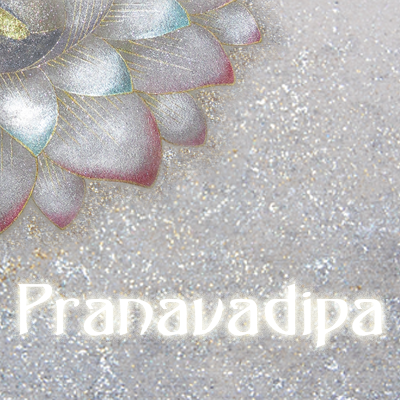
*Go to Information
*Subscribe Pranavadipa
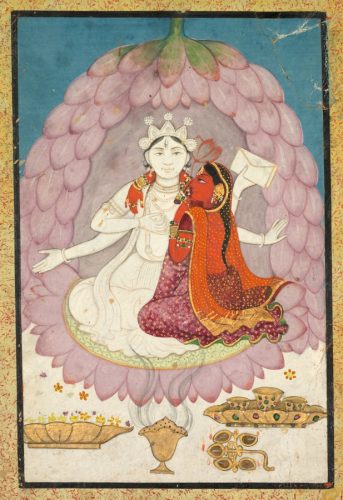
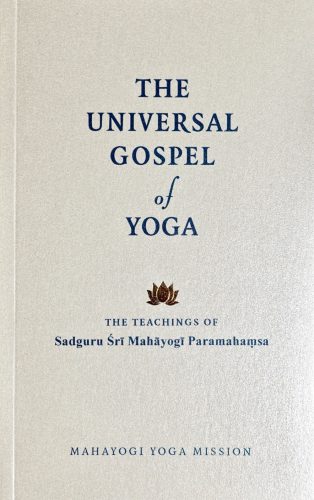
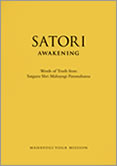
 [5] “The Pain-Bearing-Obstacles: Klesa” from The Universal Gospel of Yoga—The Teachings of Sadguru Sri Mahayogi Paramahamsa.
[5] “The Pain-Bearing-Obstacles: Klesa” from The Universal Gospel of Yoga—The Teachings of Sadguru Sri Mahayogi Paramahamsa. 
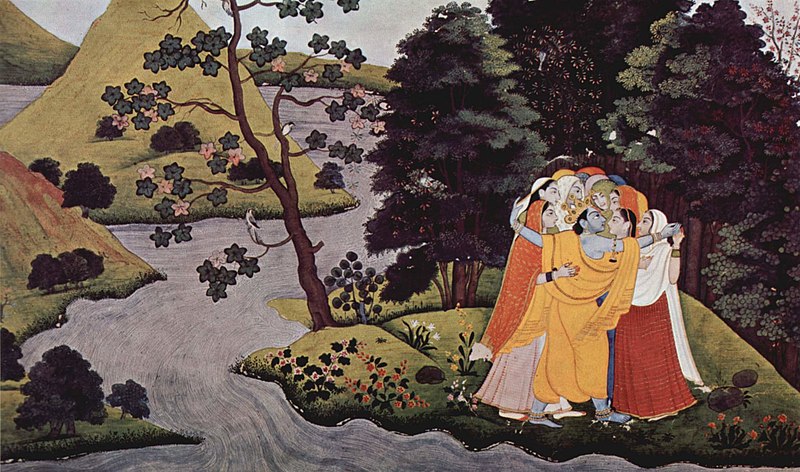

 Seeing the Beautiful World of Yoga at the Cave
Seeing the Beautiful World of Yoga at the Cave
